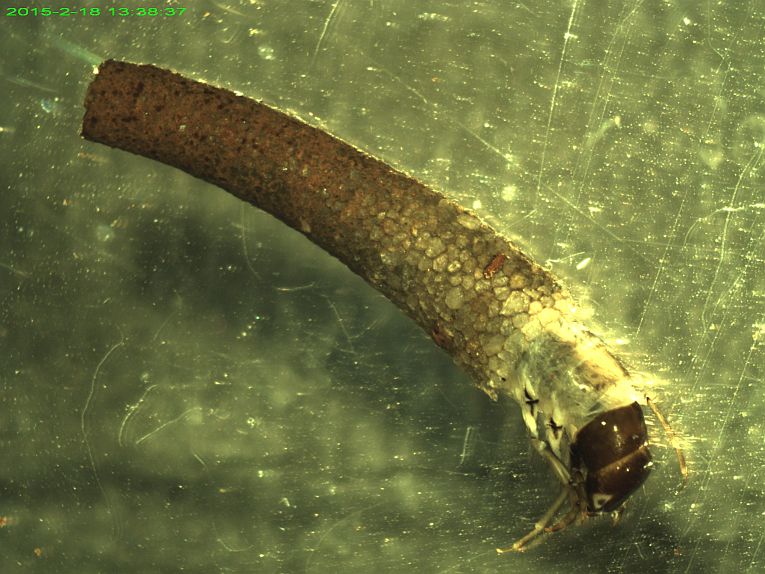caddis and case image - credit to Sam Jones/York University
Benthic stream invertebrates are among the best known indicators. They tell us almost immediately how pure freshwater is and exactly how many of our rivers are recovering from any pollution. These canaries in the coal mine are thriving surprisingly well in the low pH of streams in the English North Yorkshire Moors. Sam Jones and Peter J Mayhew, appropriately at the University of York, publish a very interesting twist on this usage in the journal, Inland Waters
as A comparison of upland stream invertebrates in moorland and coniferous woodland in North York Moors National Park, UK.
Areas of these moors in the past and present have been subjected to sheep farming, with peat bogs and treeless landscapes while Romans and Vikings have used the countryside almost as much as current industries and private owners. The acid conditions were not expected to be changed by acres of forestry in the form of coniferous planting. This paper however disputes the further acidification by pine and spruce.
16 streams in the east of this very acidic area showed the researchers a greater diversity of benthic stream animals than expected. This of course indicates a lack of pollution and a higher pH than was thought to exist within the streams. pH8 is a reliably alkaline pH that many river watchers would hope for, while the neutral pH of pH7 would be adequate for life to continue in most freshwater. The North York Moors National Park can be expected to have improved the lives of fauna and flora on the moors, but the water quality seems to have been improved by coniferous plantations, instead of reducing the pH. The Forestry Commision indeed have stopped planting streamside and created log dams to help invertebrates to resist being washed away by increased rainfall. The trees obviously increase the input of various material into the stream. This could benefit several invertebrate guilds.
Caddis flies need to build cases, while predators could receive greater numbers of land-based prey organisms.
On average, the moorland and woodland streams had the same pH. The benthic invertebrates were typical of a pH7 fauna. Kick-sampling revealed mainly mayfly, caddis and stonefly nymph, bug, flies and beetles characteristic of upland moors, crustacea and snails. 49 different groups of animal indicated the level of biodiversity, but at the species level, more appeared. However, some parts of the streams in woodland did have greater biodiversity. While Chirinomid (midge) larvae dominated moorland sites, their dominance around woodland was overlain and almost equalled by numbers of baetid(mayfly), leuctrid(stonefly), and siphloneurid and polycentropodid (caddis) nymphs. The caddis, Odontocerum albicorne was an unexpected find at Hipperley Beck, being acid sensitive, while the fast-flow mayfly,Ecdyonurus torrentis, and several others were also present to confirm the water quality.
We rarely look at rivers or streams, but the use of indicator organisms in fossil fauna was particularly involving here, with dragonflies and mayflies that can be used to indicate past conditions in our precious freshwater.










